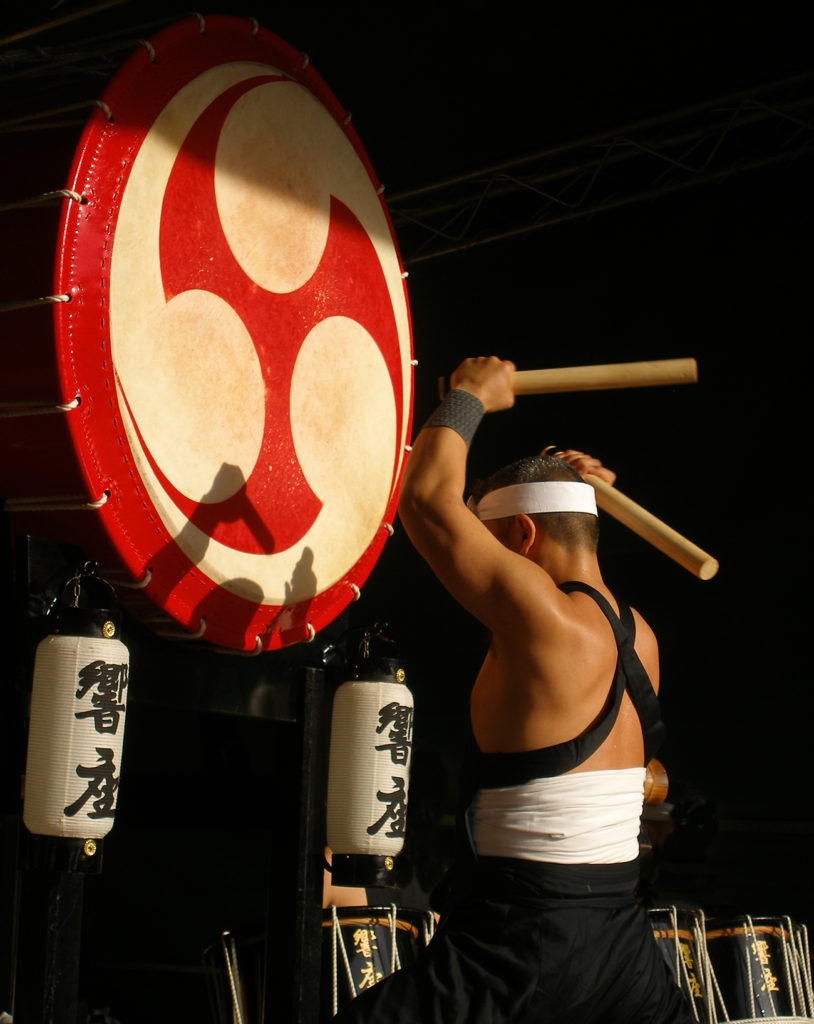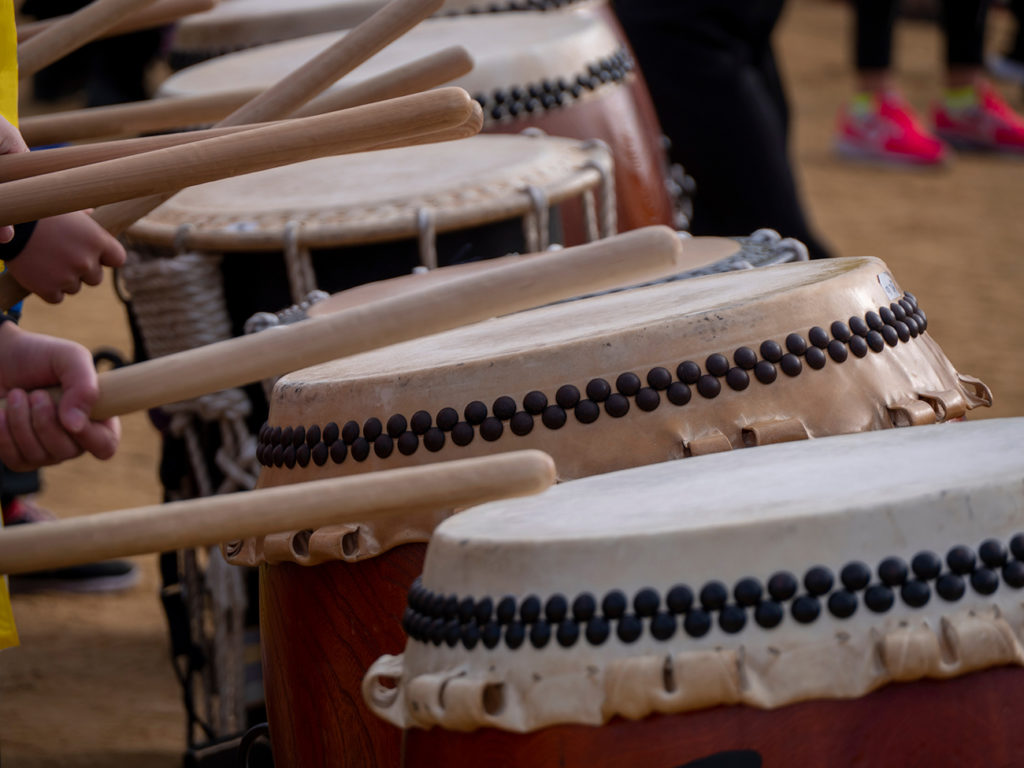
Taiko Drums: The Symmetry of Music and Movement
Ensemble taiko drumming is catching on fast in the U.S. The first organized American taiko groups started in California in the 1960s. Today, there are over 300 groups across North America that incorporate influences from different types of musical genres such as hip-hop, Latin, and jazz.
Taiko (太鼓) encompasses a wide variety of Japanese percussion instruments. In Japan, the term refers to any type of drum. But outside the country, taiko is used to describe the types of Japanese drums called wadaiko, as well as the form of ensemble drumming officially known as kumi-daiko (drum collection).
According to the myth mentioned in the Nihon Shoki (the second oldest book of classical Japanese history), taiko originally came from the Shinto gods Ame no Uzume (goddess of dawn, mirth, and revelry), Amaterasu (goddess of sunlight), and her brother Susanoo (god of the sea and storms). At one time, Susanoo was so angry he brought forth raging waters from the sea that reached the land. Amaterasu became so upset with her brother’s actions she fled to a cave, sealed it with a boulder, and refused to come out. The other gods knew that without sunlight from Amaterasu, life on earth would dwindle and eventually die. Ame no Uzume thought of turning herself to look like an old lady, emptied out a barrel of sake, and started to pound on it creating percussive and compelling rhythms that moved all the other gods to sing and dance. The sounds of the music and the revelry caused Amaterasu to come out of her cave to see what all the commotion was about. As she saw the joyous scene before her, light once again shone on earth and banished Susanoo.
The exact origin of the taiko is unknown. However, archaeological evidence suggests that ancient Japanese during the Jōmon period used drums. The Kofun period also indicated the use of drums for rituals and as a means to communicate.
For some people, the attraction to learning taiko is the depth and breadth of what the instrument offers not just as a musical instrument but in the movement of the body as well. There are so many different sounds and styles that can be produced from one single drum. When many drums are played together by an ensemble, in various styles, movement, and positioning, the artistic possibilities are endless. For others who are looking to combine movement and music in a form other than dance, playing the taiko offers the best of both worlds. Taiko involves full body drumming and can be likened to a fully body workout that satisfies the physical, mental, and musical aspects. It’s no wonder taiko is fast catching on as a great way to flex your musical creativity while exercising at the same time.
